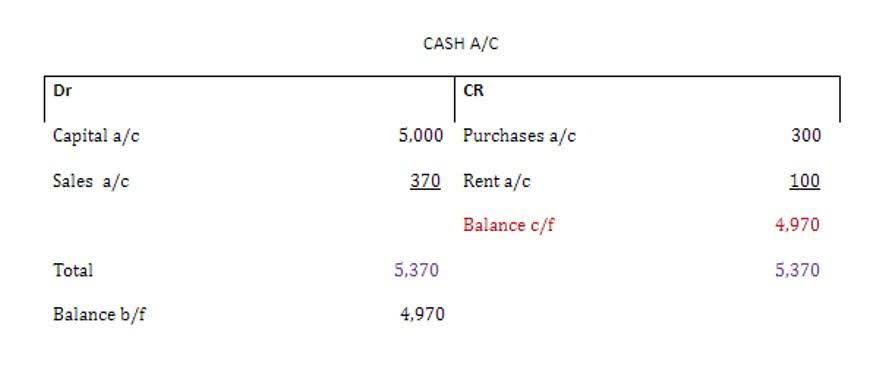
Horizontal analysis provides insights into a company’s financial performance and health. By assessing the changes in revenues, expenses, profits, gross vs net assets, and liabilities, you can gauge the overall financial well-being of the organization. For example, if a company’s total assets are $10 million and inventory is $1 million, then the vertical analysis of the balance sheet would show inventory as 10% of total assets.

What is an Example of Horizontal Analysis?
Keeping the business strong over time, and keeping an eye on financial stability is an important use case for horizontal analysis. A tech company might track its profit margins or debt levels to make sure it’s on the right financial track. Look for significant variations, both positive and negative, and identify any trends or patterns that emerge. We need to perform a horizontal analysis of the income statement of this company. In this GKSR example above, we can identify the YoY growth rate using a horizontal income statement analysis.

Types of Horizontal Analysis
The cash flow statement is https://www.bookstime.com/articles/outsourced-bookkeeping-solutions also beneficial for horizontal analysis, in addition to the income statement and balance sheet. The concept emerged from the need to track financial metrics across reporting periods to spot variances and identify performance patterns. Some of the earliest documented uses of horizontal analysis date back to the 1920s and 1930s when accounting textbooks and publications began covering it as an important analytical approach. Its use expanded over the following decades as more companies adopted annual financial reporting and analysts needed tools to compare statements. The rise of spreadsheet software in the 1980s and 1990s made it much easier to apply horizontal analysis, further boosting its adoption.
- The growth rates of 10% and 9.09% indicate a consistent upward trend in the company’s expenses.
- You’ve got your numbers, you’ve done the math, but there are still some landmines that can blow up your carefully crafted analysis.
- Horizontal analysis can be performed annually or over any other relevant period, depending on the specific requirements and objectives of the analysis.
- Two popular methods that cover different needs are horizontal and vertical analysis.
- For example, an analyst may get excellent results when the current period’s income is compared with that of the previous quarter.
- This makes it easier to spot inefficiencies and specific areas of underperformance.
- An expense category that commences at Rs. 1,000 and increases to Rs. 2,000 represents a 100% increase, but only a Rs. 1,000 variance in actual rupees.
Horizontal Analysis on Income Statement Example
The vertical analysis involves comparing financial data within a single period by expressing each line item as a percentage of a base figure, typically sales or revenue. It helps assess the composition and proportion of different components within financial statements. Horizontal analysis, on the other hand, compares financial data across multiple periods to analyze trends, changes, and growth rates. Horizontal Analysis is an analytical method that compares financial statements over time to uncover performance trends and growth patterns. This essential financial analysis technique evaluates balance sheets and income statements across multiple accounting periods, helping investors and creditors assess a company’s financial position.
- All of the amounts on the balance sheets and the income statements for analysis will be expressed as a percentage of the base year amounts.
- This type of analysis reveals trends in line items such as cost of goods sold.
- The Direct Comparison Method entails the direct comparison of numbers from one accounting period to those from another.
- For example, net income could fall sharply in year 2, despite a rise in sales, due to a marked rise in the cost of goods sold, marketing expenses, administrative expenses, and/or depreciation expenses.
- Companies can compare their financial performance against industry peers to identify strengths and weaknesses.
- By plotting financial metrics over several years, stakeholders can discern whether the company is on a growth path, experiencing stagnation, or facing decline.
- The income statement summarises a company’s revenues, expenses, and net profit or loss over a specified period, typically one year.
Horizontal Analysis: Definition, Process, Examples

Based on trend analysis, however, these expenses are actually declining as a percentage of sales. Initial gross profit ratio calculations seemed to indicate little variation, and thus little effect on income from operations. The increase in cost of goods sold (78% vs. 77% of sales) may warrant further investigation. Using horizontal analysis in monthly or quarterly reviews helps businesses track performance trends and spot potential issues. horizontal analysis formula By regularly monitoring key metrics like revenue and expenses, companies can make timely adjustments to stay on track with their long-term goals and improve decision-making.
- While horizontal analysis is primarily used for financial data, it can also be applied to non-financial data to identify trends and patterns.
- For example, in the income statement, we can, based on historical data and trends, make assumptions about sales growth and then forecast the sales growth rates through the forecast periods.
- In horizontal analysis, the changes in specific financial statement values are expressed as a percentage and in U.S. dollars.
- Fundamental analysis examines a company’s financial statements and health to determine its financial strengths and weaknesses.
- Looking to streamline your business financial modeling process with a prebuilt customizable template?
- Horizontal analysis and vertical analysis are two common methods of analyzing financial statements.

